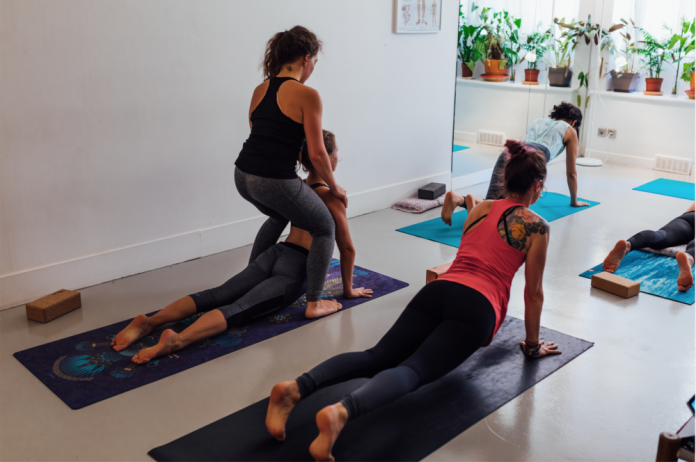Have you ever wondered what the point of restorative yoga is? Have you seen these practices and just thought it looks like a bunch of people laying down on the floor draped over pillows? If so, you need to know that you’re not alone. So let’s take a little bit of time and explain what the purpose of restorative yoga is so that you can not only appreciate it, understand the benefits and hopefully start to integrate it as part of your weekly home practice.
Restorative yoga was developed by a world-renowned yoga master B.K.S Lyengar. In restorative yoga, we generally use props (such as pillows, blankets, and yoga blocks) to support the body. This helps to grant aid and relaxation not only to the physical body but also to the mind.
During restorative yoga practice, when we support the body, the body is encouraged to release tension and negative energy, often accumulated in our muscles. When the body enters into a state of relaxation, the mind becomes relaxed; hence pressure is released from both body and mind.
Idea Behind Restorative Yoga:
This practice’s idea is not to have any stretch but to experience the most profound release possible. Now you might wonder what the point is; why would you integrate that into your weekly practice? If you’re not increasing flexibility, strength, or endurance, why would this be part of daily life? Most of us spend most of our lives in a heightened state of stress in what’s called the sympathetic side of the nervous system.
We live in a time where there is a 24/7 news cycle and an inundation of information coming not just from cell phones but from other people. As a result, we move from task to task at a pace that’s unlike any other in recorded history. This leaves our minds inflamed, and our bodies and what we know now are that most diseases aren’t things that we catch, but there are things that we contract from spending too much time in a heightened state of stress. So when you come into practice like this, the idea is for you to find a place where you can drop into an utterly receptive state where you’re not trying to get deeper into a pose.
Purpose of Restorative Yoga:
Restorative yoga practices were initially created to help those students who were ill or not well or physically injured. So they used props to support their body. In this way, students could experience an opening in the tissues without even working so hard. Restorative yoga helped the students to restore equilibrium and balance to the body and the mind.
Postures are mostly held on the floor in the restorative yoga system, and these postures are adopted for more extended periods in a supported way. In this way, restorative postures are supported, and there is a minimal sensation in the poses. The purpose of restorative yoga is to drop you into a deep state of relaxation. This practice’s idea is not to have any stretch but to experience the most profound tension release from the muscles.
Effect of Restorative Yoga on Body :
When you do yoga, your sleep and digestion improve. Science is now showing us that the more time we spend in the nervous system’s parasympathetic side, the fewer rates of heart disease we see—even lower rates of cancer and significantly lower rates of autoimmune disorders.
So while we don’t expect restorative yoga to be your main practice, we would love for you to consider injecting it into your week maybe 2 or 3 times. No matter what’s going on in your life, perhaps you’ve injured your body somehow. You can’t move the way you’re used to. You can do restorative yoga that there will always be a place for you to receive the benefits of getting on your mat of turning inward and tuning into your breath.
How to Perform Restorative Yoga:
In restorative yoga, we use props, generally speaking, we use a bolster, but if you’re at home and don’t have a bolster, you can replace that with a pillow or even a stack of pillows. Then we’ll bring in blocks and sometimes straps. These practices are short, usually around 30 minutes, so you can do a 60-minute power yoga practice and then add on 30 minutes of restorative yoga.
This is a practice that you can do at any point in time in life when you’re sick when you’re pregnant or even at the times when your energy is at its lowest. You need to know that you have access to your yoga practice. There’s so much more to say about the profound gifts of this practice. We look forward to practicing with you and restoring for ourselves and the sustainability of our inner life, our outer life, and our community.





